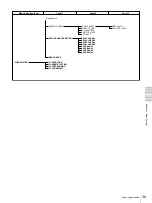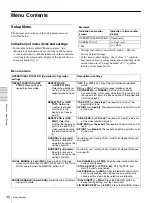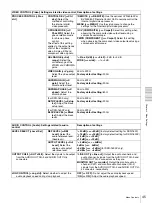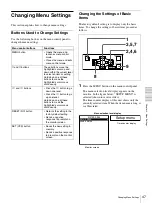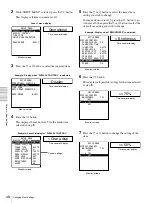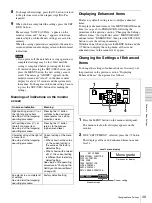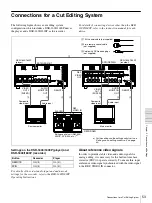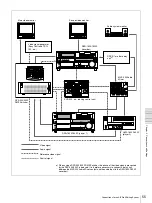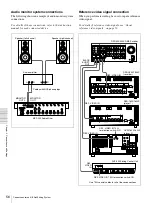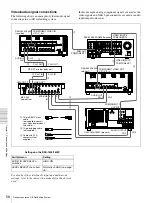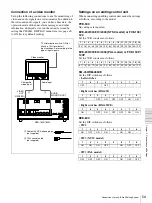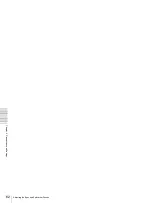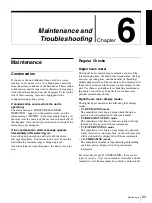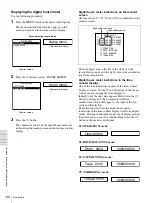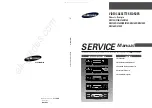
53
Connections for a Cut Editing System
Ch
apt
er 5
Con
nec
tions
and
S
e
ttin
gs
Connections for a Cut Editing System
The following figure shows a cut editing system
configuration which includes a DSR-1600/1600P unit as
the player and a DSR-1800/1800P as the recorder.
For details of connecting devices other than the DSR-
1600/1600P, refer to the instruction manual for each
device.
Settings on the DSR-1600/1600P (player) and
DSR-1800/1800P (recorder)
For details of the video/audio input and audio mode
settings for the recorder, refer to the DSR-1800/1800P
Operating Instructions.
About reference video signals
In order to provide stable video and audio signals for
analog editing, it is necessary for the built-in time base
corrector (TBC) to operate correctly. To ensure this, input
a reference video signal synchronized with the video signal
to the REF. VIDEO IN connector.
RECORDER
SDTI(QSDI)OUT
AUDIO
MONITOR
OUT
AUDIO
MONITOR
OUT
VIDEO
OUT 2
(SUPER)
REMOTE
SDTI(QSDI)IN
VIDEO
OUT 2
(SUPER)
REMOTE
REF.
VIDEO
OUT
REF.
VIDEO IN
PLAYER
1
1
3
2
1
1
3
2
A
75
Ω
coaxial cable (not supplied)
C
Cable with RCA phono plugs
(not supplied)
B
9-pin remote control cable
(not supplied)
DSR-1600/1600P
(player)
DSR-1800/1800P
(recorder)
Audio input
Composite
video input
Source monitor
Main monitor
Editing control unit (RM-450/
450CE, PVE-500, etc.)
a)
Audio input
a)
For the settings on the editing control unit, see
“Settings on an editing control unit” on page
59.
Composite
video input
Button
Recorder
Player
REMOTE
On (lit)
On (lit)
9PIN
On (lit)
On (lit)

